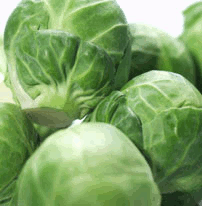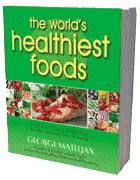


There are two issues we would like to address in responding to your question.
Our Food Ranking System Is A "Food-Only" System
First, our food ranking system does not attempt to evaluate what happens to the food inside of a person's digestive tract. It's strictly based on laboratory analyses of the foods themselves. When we classify a food like spinach as being an excellent source of iron, we are comparing the milligrams of iron found inside of the spinach leaf to the amount of calories represented by macronutrients found in the leaf (proteins, carbohydrates, and fats). We consider spinach to be an excellent source of iron because it contains a large amount of this mineral in exchange for very few calories.
On a general informational website, we would not attempt to address bioavailability of a food nutrient for any particular individual, because individuals are too different in their physiology and metabolism. For example, in the U.S., a top cause of poor iron availability is lack of stomach acid secretion (hypochlorhydria). That type of clinical consideration is one we view as falling outside of our website's scope.
Minerals Are Found In Both Free and Chelated Forms
A small percentage of any particular mineral-like iron-may be contained in food in its "free" form. The greater percentage, however, is found in the form of an organic complex. Minerals usually attach themselves to amino acids or organic acids. These amino acid and organic acid forms of minerals are commonly referred to as "chelated" forms. There is no automatic connection, however, between free forms, chelated forms, and absorption. Sometimes a mineral gets absorbed in its free form. Other times the chelated form is required. Minerals can also undergo a series of metabolic changes in which they shift back and forth between free and chelated forms before taking their place in the body pool.
Heme and Non-heme Iron
Beginning with the published work of Elaine Monsen in 1978, a distinction between heme and nonheme iron has been consistently important in understanding iron absorption from food. Heme is a protein found in animals foods, including meat, fish, and poultry, but not in plant foods. Iron can be chelated by this animal protein. This food form of iron is called heme iron. On average, heme iron is about 23% bioavailable. "Bioavailable" in this situation means that the iron can successfully make its way from the food into our bloodstream. This 23% number for heme iron, however, is only an average. In practice, how much heme iron we absorb is highly variable. Food cooking methods and presence of calcium have a significant impact on bioavailability of heme iron.
Iron found in plant foods is generally referred to as "non-heme" iron. Non-heme iron has a much lower average absorption percentage between 3-8%. However, the actual absorption of plant food iron is once again highly variable. For example, non-heme iron absorption can be increased as much as 200-300% when large amounts of vitamin C are present. Copper, cobalt (a mineral naturally found in vitamin B12), manganese, and some amino acids can also increase absorption of non-heme iron.
Iron Availability and Recommended Dietary Allowances (RDAs)
Recommended Dietary Allowances (RDAs) for iron and all other nutrients refer to food content. Bioavailability factors are researched and analyzed before RDAs are established. In other words, the RDAs by their very nature take bioavailability into account. The iron RDA for adult women is 8 milligrams. This recommended amount assumes an average balance of heme and non-heme iron, and an average mix of absorption factors; it is not the amount of iron an adult women needs to have bioavailable, but is the total amount of food iron an adult women needs to have an adequate amount of bioavailable iron. On average, based on the National Academy of Sciences research, a woman who consumes eight milligrams of food iron will have an adequate amount of bioavailable iron.
It would not be healthy for an individual to get all of his or her iron from any one food, including spinach. However, when you see on our website that one cup of steamed spinach contains about 6.5 milligrams of iron, it's legitimate to think of this iron amount as being about 75% of the daily requirement for an adult woman who needs an average of 8 milligrams per day. (For an adult male, this percentage would be closer to about 33% of the daily requirement).
Plant Food Components That Can Bind Iron
Phytic acid is the best-studied component in plant foods that can bind iron and lower its absorption. Many of the studies involving phytic acid and iron have been done on grains. For example, whole wheat rolls containing 5-10 milligrams of phytic acid and 3 milligrams of iron turn out to provide about 1.5 milligrams of available iron, or about 50% of the total iron present. Although 1.5 milligrams o bioavailable iron is not a large amount, we believe it would be incorrect to treat the wheat rolls as an unimportant source of iron.
We would take this same approach with spinach. Although we have not seen research studies making this same determination for spinach, this plant food definitely contains both iron and phytic acid. One-half cup of steamed spinach contains the same approximate amount of iron as the wheat rolls described above. For this reason, we'd expect a fairly small amount of bioavailable iron from the spinach as well. Our conclusion, however, would be to treat all individual plant foods as fairly poor sources of bioavailable iron, but excellent sources of food iron that could be combined in a meal plan to provide outstanding bioavailable iron overall.
Eating Habits Also Affect Iron Availability
The nutrient composition of spinach is not the only factor to consider when it comes to iron availability. Foods eaten alongside of spinach can also affect iron absorption. Tannins in tea, for example, have also been shown to interfere with iron absorption. In some instances, as little as one cup of tea can lower the availability of non-heme iron by as much as 60%. We believe that much more research will eventually be needed to explain the full dynamics of iron bioavailability. In the meantime, we believe the optimal approach is to trust the nutrient richness of whole natural foods and long-standing food traditions in countries where good health is widely enjoyed.
For more information on this topic, please see:
References:
Astier-Dumas M. . Ann Nutr Aliment.1975;29(3):239-44.
Brown D. Iron Fulfillment Possible Through Vegetarian Lifestyle. J Am Diet Assoc. 2003;103(5):601.
Brune M, Rossander L, Hallberg L. Iron Absorption and Phenolic Compounds: Importance of Different Phenolic Structures. Eur J Clin Nutr. 1989.43(8):547-57.
Hallberg L. Perspectives on Nutritional Iron Deficiency. Annu Rev Nutr. 2001;21: 1-21.
Park J, Brittin HC. Increased Iron Content of Food Due to Stainless Steel Cookware. J Am Diet Assoc. 1997;97(6):659-61.
Reddy NS, Sondge CV, Khan TN. In Vitro Bioavailability of Iron From Spinach (Spinacea Oleracea) Cultivated in Soil Fortified With Graded Levels of Iron and Zinc. Plant Foods Hum Nutr. 1993;44(3):241-7.
Rutzke CJ, Glahn RP, Rutzke MA, et al.. Bioavailability of Iron From Spinach Using an in Vitro/Human Caco-2 Cell Bioassay Model. Habitation (Elmsford). 2004;10(1):7-14.
Yadav SK, Sehgal S. Effect of Domestic Processing and Cooking Methods on Total, Hcl Extractable Iron and in Vitro Availability of Iron in Spinach and Amaranth Leaves. Nutr Health. 2002;16(2):113-20.



